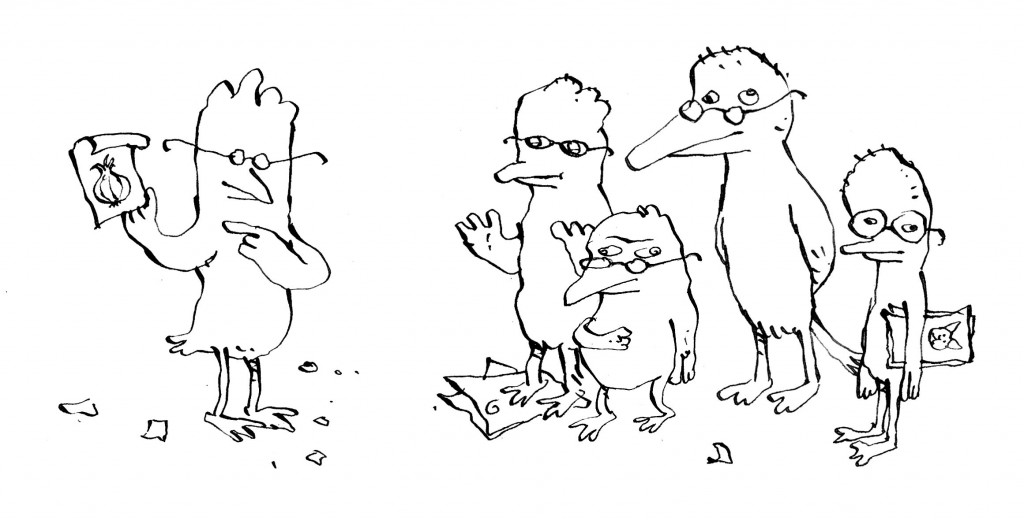This year I was one of the five jurors of the Bologna Children’s Book Fair Illustrators Exhibition. In the beautiful catalogue published by Corraini, I was asked a few questions on creating picture books and more.
The five jurors: Klaus Humann, Nathan Fox, Francine Bouchet, myself, and Taro Miura.
You have said in the past that there are so many obstacles and taboos when creating children’s books, that you run the risk of censoring yourself. How do you avoid self-censorship?
I was specifically referring to the U.S. market, where all my children’s books so far have been originally published.
I consider myself fortunate to have found such a fertile ground for my ideas and my style, and I doubt that I would have been able elsewhere to make my passion for picture books into an actual profession. I am very grateful to the editors who saw potential in my work, beginning with the unforgettable Frances Foster.
There is, of course, the other side of the coin. Compared to what gets published in other Western countries (Germany, for example, or France, or, perhaps to a minor degree, Italy), American books for children tend to be very tame. There are glaring exceptions, of course, but generally speaking you don’t see books that deal with issues that are considered too mature for the audience: death, sex, war, violence, depression, and so on. When books on such themes do get published, they tend to be heavily weighed down by a predictable message, and illustrated incompetently. There is the widespread belief that children need to be shielded from the reality of life. That, in my opinion, is a huge mistake, and is akin to lying. Of course I’m not suggesting that children’s books should include pornography or gratuitous violence, but if a story calls for it, one shouldn’t shy away from showing unpleasant situations. The risk of self-censorship I was talking about is always looming, and can be difficult to detect.
When writing a story, or drawing a picture, you do feel the pressure to deliver something free of possible controversy, or to make choices based on specific political agendas. But in order to produce the best possible work, the only pressure you should feel is the pressure to be true to your own voice.
When creating a children’s book, do you ever have a precise image of your ideal reader in mind?
Absolutely not. I don’t think of the reader at all. I believe that when writers think too much about who’s going to read their book, the result will be formulaic at best.
Which illustrated book would you have liked to have authored? Why?
There are so many authors and illustrators I worship and whose books I hold dear. In general, I’m drawn to unusual stories that are beautifully illustrated without trying to impress. I can’t stand authors who follow a trend and illustrators who want to show off without even possessing the appropriate skills. Warmth, sincerity, and irony are the main qualities I always look for in a book.
Arnold Lobel’s Frog and Toad stories are among the most profound, funny, endearing books I’ve ever read. The drawings perfectly match the tone of the text, at the same time melancholic and reassuring. William Steig, Maurice Sendak, Tomi Ungerer, Edward Gorey: they all have created wonderful books that keep inspiring and humbling me.
But if I have to pick one single book, it would probably be Wolf Erlbruch’s Duck, Death, and the Tulip. I’ve never seen anything like it. It’s a death dance for children. It’s original, powerful, sweet, compassionate, sad, comforting. It’s done with such measure and good taste. I would be happy if I could produce something comparable to that book.




